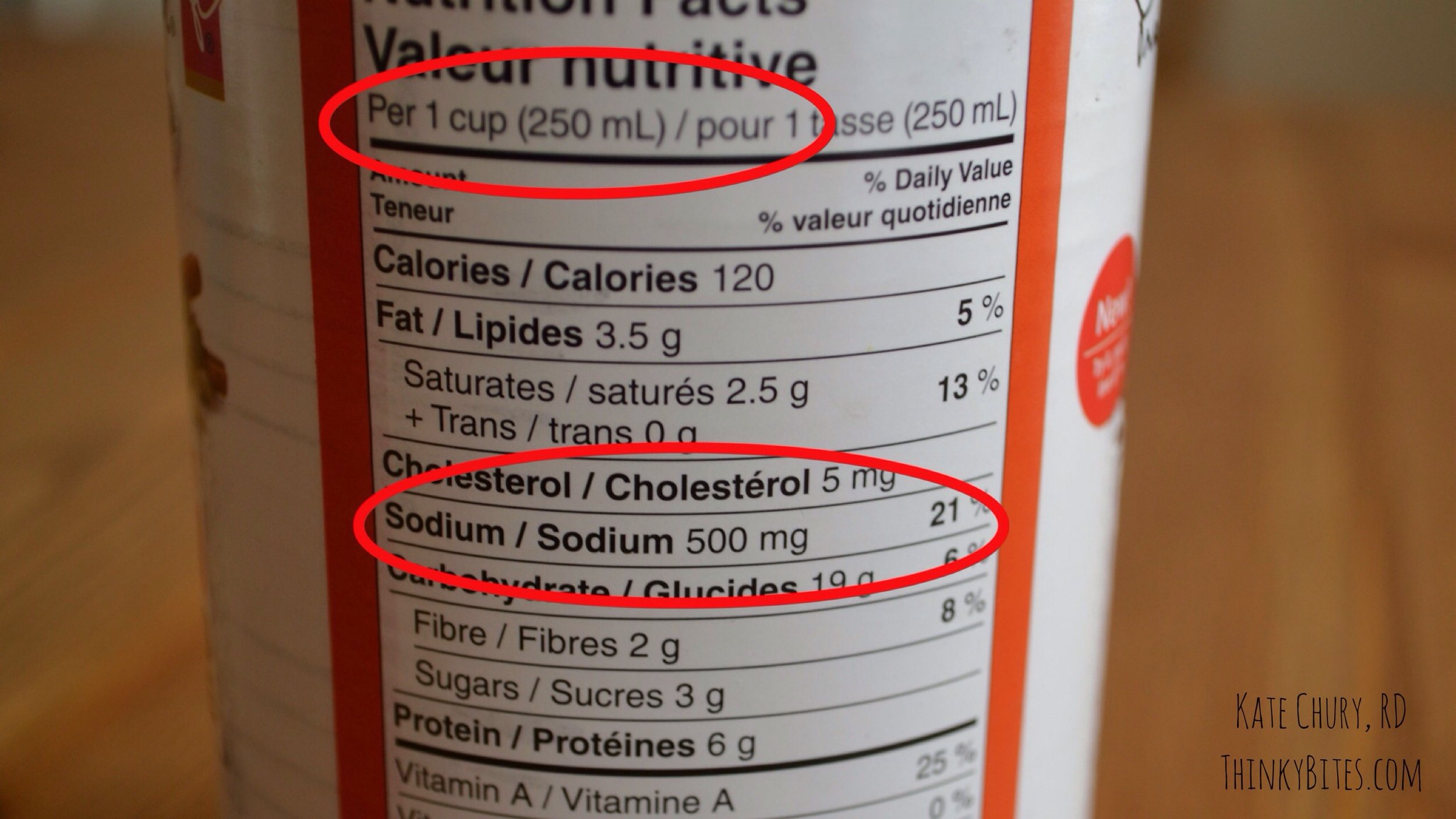Salt: Is it a little or a lot?
/Ever wondered how to know if a food has a little or a lot of sodium? Are you confused by what the nutrition facts label actually means and how to use it?
Current dietary recommendations are not to exceed 2300 mg of sodium per day. This is equivalent to 1 teaspoon of salt per day. What does this really mean in a practical sense? If the majority (and I’m talking up to 75%) of the sodium we get is from pre-made foods, how can we efficiently measure our sodium intake to keep it below 2300 mg per day? The truth is keeping an accurate tally of our sodium intake is time consuming and impractical. Who has time or patience to do that every day?
While it may not be practical to keep track of every little milligram of sodium ingested, using the nutrition facts label can help us make better choices when it comes sodium intake. My preference is to use the percent daily value (% DV) on the nutrition facts label to decipher if something has a little or a lot of sodium.
Always take note of the serving size.
So, what is this % DV? Essentially, it shows how much of a nutrient is present per serving, in relation to how much you should have each day. For example, if the % DV is 25% for sodium, this means that the serving (as noted by the serving size on the label) has 25% (or ¼) of your sodium allotment for one day. That’s actually quite a bit, isn’t it?
It’s always important to take note of the serving size on the nutrition label. The serving size is located right under the words 'Nutrition Facts/Valeur Nutritive' and will both have empirical and metric measures (in Canada, at least). Serving sizes are not standardized at this time and must be taken into consideration when analyzing whether nutrient in a food are a little or a lot.
Now that you’ve got a basic understanding of the % DV, here’s the ‘quick and dirty’ trick to deciphering if something has a little or a lot of sodium:
- If the % DV is 5% or less = a little bit of sodium
- If the % DV is 15% or more = a lot of sodium
That’s it. I don’t want you to keep a little tally of how much sodium you are ingesting each day. No need to make sure that all the % DVs don’t exceed 100%. Just use this as a tool in helping you make better nutrition decisions. If you are buying packaged foods, choose those with the lowest % of sodium, and preferably with those with less than 5% DV. If something has more than 15% sodium per serving size, you know that it is high in sodium and that it's better off finding a lower salt alternative.
Let’s look at some examples:
Product: hot sauce. Sodium content: 8% DV.
Verdict: High in sodium.
This doesn't seem like too much until you notice that the serving size is only 1 teaspoon. Would you only use 1 teaspoon of hot sauce, or would you use more? Most people would use more and, therefore, get more than 8% DV sodium.
Product: wheat pasta. Sodium content: 1% in 1/2 cup cooked pasta
Verdict: low in sodium
Even having a few of these 1/2 cup servings in one meal will not cause you to exceed your daily sodium budget. It is typically the sauce on pasta that is higher in sodium.
Product: canned tomatoes. Sodium content: 1% DV for 1/2 cup
Verdict: Low in sodium.
These canned tomatoes are 'No Salt Added' tomatoes. Many canned vegetables, including other canned tomatoes, are packed with salt. Always look for the low salt alternatives of canned vegetables.
Product: Canned soup. Sodium content: 21% DV in 1 cup of soup
Verdict: High in sodium
The total volume of this can of soup is just over 2 cups and it is pretty common for one person to consume a whole can of tinned soup. This means someone could potentially get 1000 mg (or 42%) of the daily sodium allotment in one sitting.
Product: Tomato sauce. Sodium content: 18% Dv in 125 ml
Verdict: High in sodium.
It is very easy to have 2 or 3 of these 1/2 cup servings over top pasta which could equal 1/3 to 1/2 of the daily sodium allotment in one meal. There tends to be quite a bit of salt in pre-made pasta sauces.
Product: Quick Oats. Sodium content: 0% DV
Verdict: Low in sodium (no salt!).
You don't even have to look at the serving size in order to see that these oats are low in sodium. These are just oats. Nothing more. Some other flavoured instant oatmeal cereals do contain salt, however, so it is always best to take a quick look at the label.
To recap, always check the nutrition facts label for the sodium content of food. Look at both the serving size and the % daily value for sodium. If the % DV is 5 or less, it's low in sodium. These are your best options. If it's higher than 15% DV, it's high in sodium and best to look for a lower salt alternative.










